It’s not easy living with pain, much less trying to live well and look after yourself when you are in pain. We are so frequently forced to choose between one essential task and another, tasks that are so often taken for granted by healthy people. “If I wash my hair, I won’t have enough ‘spoons’ to see my friend today,” or, “if I make breakfast, I’ll still be flared-up by lunch.”
Although each of us have our own personal limitations, it’s all variations of the same constant analysis: forever needing to work-out how much our pain will increase by doing one thing, timing and limiting each activity, while having to pick, and choose between activities—even the most vital of activities.
When in a particularly nasty set-back, the act of doing anything with my hair was the grandest of achievements and physically making it from bed to the bath, equally so, but as everyone with complex chronic painful illness knows, scenarios like this one repeat themselves with every flare-up or set-back.
In light of the unpredictability, of the constant analysis, and many symptoms that make eating well so tricky, this post focuses on ways to still eat as healthily as possible despite chronic illness and relentless pain. Some may require a little assistance, others a bit of planning. I’ve also included three pain-easing foods, and a list of ones to reduce or avoid.
Eating Healthily When You Have Chronic Pain
What you eat has a direct impact on the way you feel but when you feel utterly awful and the pain is fervent too, preparing and eating the right foods brings its own challenges. It takes such immense strength to push through the pain of cooking, if it’s possible at all, only for that pain to then lessen the enjoyment of eating as you’re so flared-up from preparing it, or worse, now nauseous from the pain’s severity that you are unable to even eat.
Other times, a sharp rise in pain can make us far too sick to contemplate eating food, even food prepared by others, after all nausea and being sick from pain seldom incites hunger. For this and many other reasons, chronic pain and illness can mean we’re eating far less healthily than we’d like.
Though given how and what we eat has such a powerful effect on the pain itself, as well as how we feel emotionally — especially our mood and in turn ability to cope — finding ways to still consume the nutrients we need without flaring the pain and illness becomes an essential part of managing both. That said, the first and most crucial step is in letting go of any guilt.
Let Go of Guilt
“When you suffer from a chronic illness, running out of energy happens very quickly, everyday. We don’t always have the energy to prepare a full meal everyday. Let alone break out our aprons after we have tackled the grocery store… getting home and being to tired and ouchy to cook happens to all of us, all of the time,” says chronic illness patient-advocate and creator of The Unbroken Smile, a blog to share stories and support fellow pain patients, Elizabeth Pain.
“Stop feeling guilty about it. You can only do, what you can.” It’s already tough enough living with complex illness and pain, don’t add to this nor worsen how you feel with guilt. Whether it stems from not eating as healthy as you long to or from depending on others instead of caring for and contributing in greater ways.
Despite circumstances being far beyond your control, it’s a natural response, and more so if before the pain you were an active and independent soul. After all it hurts not being able to express ourselves in every sense, and cooking for those we care for and living as independently as we would like is no exception.
Though even if you now rely heavily on others, try to let go of guilt and instead give yourself the same compassion as you give to those you love. “I love to cook, but most days just don’t have the energy for it anymore. So I am often looking for meals that are easy to prepare and not time consuming, with minimal clean up,” says Elizabeth Pain.
How to Make it Easier…
- Part I — When Pain is Too High to Cook or Eat
- Part II — Preparing food & Cooking with Chronic Pain
- Part III — 3 Foods to Include in Your Diet When You Have Chronic Pain
- Part IV — When Food Causes Pain
When the pain is too high to contemplate food, much less the preparing of it, or if pain and symptoms are affecting your appetite, try these tips for when you’re unable to cook or flared-up.
When Pain is Too High or Affecting Your Appetite
If feeling pained-up, depressed and exhausted, preparing nutritious food may be the last thing on your mind. You have to eat but eating healthily and being blessed with a body that’s physically able to prepare that healthy food isn’t always within your control—especially if you’ve had other activities or events that have spent your spoons, leaving you too flared-up to cook.
Even healthy people tend to eat unhealthily when they are feeling unwell but if you never feel well, and always in pain, trying to still have something nutritious helps far more than abating hunger. In fact, if you are often going hungry because of chronic pain, that pain will likely be worse.
You may have noticed your pain is more severe when you’re hungry. Dehydration too also massively affects pain levels, so always have water beside you. One useful tool is filling a litre bottle with filtered water and ensuring it’s finished by the evening. If you take medication, increase how much water you consume as they can be dehydrating—also worsening pain.
-
Try to eat little and often—even if it’s just a tiny preprepared snack (see below) — to avoid worsening pain through hunger and erratic blood-sugar levels, which also affect pain intensity, your mood, and worsen brain fog.
-
Dehydration increases pain levels — Always ensure you are drinking enough water (not out of plastic bottles; with more than 5 trillion pieces of plastic, collectively weighing nearly 269,000 tonnes floating in our oceans, use a filter or a portable water-filter bottle (see here for a few options).
-
Fill a litre bottle with filtered water, keep it beside you & finish it by the evening (or use a filter bottle). I love my Bobble bottle as you can drink even if flared-up and lying down, and it’s kind to the oceans and planet.
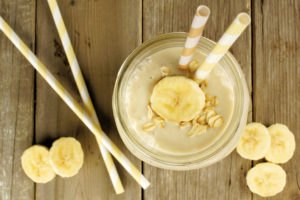
When pain levels are high & appetite low, drinking a fruit smoothie can be a lifesaver. They can be prepared in advance & kept in the fridge or even frozen.
It’s unsurprising that severe pain can have an effect on our appetite and food choices but even when pain is high and appetite low, eating a whole food protein bar or drinking a fruit and/or protein smoothie can be a lifesaver — especially if pain is making you too nauseous or sick to eat but your body is hungry (see below for alternative snacks).
Smoothies and protein drinks can be prepared in advance & kept in the fridge or even frozen frozen (depending on the ingredients). Adding protein powder or chopped nuts helps your body to still get the nutrients it needs despite being unable to cook or eat — with the added benefit of slowing down the release of sugars in your body — keeping your blood sugar levels consistent, which also helps reduce brain fog and fatigue.
Added greens, such as spinach, or powdered chlorella, spirulina, wheatgrass etc. (if you’ve never used these before be VERY sparing—a little is healthy, a lot will put you off forever), adds many vitamins & minerals that support your immune system and overall health.
For examples of nutritionally balanced snacks to have on hand & those that are [relatively] easy to prepare, scroll down to the next section.
Preparing Food & Cooking in Chronic Pain
How to Make it Possible or Easier—Prepare Ahead
On those elusive ‘good’ days the last thing you may want to do with your lower levels of pain is prepare food and meals. It’s natural to want to do things you love, work on projects that create meaning and purpose for you, and spend time with loved-ones, more so when so isolated by chronic pain and illness. These things are important too, crucial in fact but equally your dear body, with the many demands already placed upon it, needs all the nourishment you can manage to give it.

If you can enlist a little help, that’s wonderful, be specific in your requests and others are far more likely to give you the support you need. However, the majority of those living with chronic pain and disability do not have others to help them, and a flare-up can mean not getting the nutrients you need to manage it and cope.
-
Always remember to use pacing for pain management so you stay within your pacing limits. Many find that breaking up the cooking and pre-cooking process helpful to both lessen pain and fatigue as well as make cooking possible, though the same applies if preparing raw or ready-to-eat foods and snacks (see the examples below).
-
Prepare the ingredients ahead — Though this can mean slightly lower levels of certain nutrients, it is still infinitely healthier than processed food and helps you pace the cooking process so you avoid flaring-up the pain. Chop vegetables in stages (obviously only if safe for you), place in a dish, cover with clingfilm and put in the fridge till needed/phase two—after a pacing break.
-
When unable to opt for fresh, substitute with freshly frozen foods and ready prepared ingredients — Foods that are useful are already prepared and pre-cut before freezing, such as chopped herbs, sliced fruit, or fresh spinach and used by the handful (or pinch-ful) in smoothies, soups, stews etc.
-
Other useful foods to have in store include: Pre-cooked quiona or rice (especially if pain is too high to prepare it), these can be made in a minute in a microwave or 3 on the hob and have varieties from brown to basmati rice, to quiona to blends of healthy grains. Also: tinned chopped tomatoes with onion, chopped garlic in oil or ginger in a jar, canned or boxed soups—they save you pain, time and spoons (check the ingredients for added sugar or salt and avoid any with artificial additives which may make your pain worse).
-
If you are able to cook [with or without help] use a ‘better’ day to prepare a few portions of a single recipe — This way you’re cooking once for 2-5 meals that can be put in the fridge or frozen for when pain is too severe to cook. So if you’re flared up and hungry, you [hopefully] will still be able to consume a healthy meal—and with a lot less tear-inducing movements that further flare the flare (see more on ‘one-pot’ meals below or if too pained up to eat, scroll down for alternatives).
-
Another useful tip is to prepare by having a few healthy snacks in your Flare-Up Toolkit (add your email to the form at the top to receive yours near-instantly by email).
Use the Freezer to Prepare Ahead
Even if you have the teeniest of freezers, it can still be hugely helpful in eating well despite chronic pain.
-
Freeze portions that are already divided into meals (whether made by you or a loved-one who cares) — So you can simply put them in the oven or to defrost and heat. Pie dishes can be great for this or good quality freezer bags.
-
Freeze sauce (once cooled) and/or stock into ice cube containers — This can then be simply dropped into your food while cooking, saving spoons, time and pain. You can also chop herbs this way (with help if necessary).
-
Freeze smoothie ingredients so they are possible — or far easer — to make — Bananas freeze well if peeled and put in freezer bags for instance, blueberries and spinach are wonderful too.
-
If getting to the supermarket is an excruciating challenge, stock up whenever possible — Frozen sliced bread for instance can be a life-saver if no one’s around to help. Many supermarkets (and some local sole traders too) deliver to your home. This can become vital when housebound or severely limited by chronic pain and disability & ensure frozen food stays frozen.
[UNNECESSARY WARNING: If you have allodynia, particularly thermal allodynia—be extra careful when handling anything cool or cold.]
Assess & Optimise Your Kitchen
“Every day is a challenge to remain independent when living with chronic pain. Normal activities such as walking, taking the stairs, squatting, sitting for long periods, and getting in and out of vehicles can be challenging and painful,” says CRPS/RSD and endometriosis patient-advocate, chronic pain educator, speaker and president of the International Pain Foundation, Barby Ingle.
“To get more out of life, I had to learn how to minimize disruptions in my daily routine and how to be a time and energy saver. That meant making some changes around the house. Every pain patient and their family should assess their surroundings, perhaps with the help of professionals, and prioritise the modifications needed. This can help the patient maintain their independence and function.”
Here Barby offers a list of aids & lifestyle modifications you may wish to consider — depending on your personal needs — for the kitchen:
-
Easy grab handles for cabinets
-
Long-handled “grabbers” for removing items on high shelves or picking up items from the floor
-
Sliding shelves or turntables on kitchen shelves so you don’t have to reach into cabinets to access items in the back
-
Large knobs on appliances requiring manipulation (stove, dishwasher, washing machine)
-
Lightweight appliances
-
Lightweight dishes and pots with long handles
-
Long handled cleaning appliances (brooms, dustpans, sponges)
-
Easy-open tin openers and easy-open jar openers
In Barby’s post: Making Everyday Life Less Painful on the Pain News Network you’ll find many more solutions and ideas for your home and life.
Make Meals With Leftovers For When You Can’t Cook
“Living with a chronic pain condition makes even the simple things difficult. I didn’t realize how much I took for granted until I became sick. When I became ill I struggled to do any cooking due to the fatigue and pain,” says Elizabeth Pain.
Coping with complex and painful chronic illness while still trying to consume what’s best for your body in spite of the symptoms which can in turn affect your ability to eat, becomes an accomplishment in itself.
Takeaways, processed ready-made meals or fast food may be easier, or even necessary, especially if you are too pained-up but the negative effects, both in short and longterm, are not good for us or for our often medically-depleted finances. “I found myself just calling my husband to grab some fast food on his way home from work. This impacted our budget greatly,” says Elizabeth, who in a family of five, needed a solution.
“I found some crock pot meals and began experimenting. I also found by making it ahead of time and freezing my crock pot meals worked out even better for my family. Once a month on a Sunday afternoon we can now do 25 meals in a little over two hours including clean up. It has been a life saver for me and the kids seem to have fun helping. With practice you can easily become a pro. If you search the web some of the recipes will have an ingredients list for you.”
-
If you do have days where a degree of cooking is possible, always make double portions or batches. This way, you have something in your fridge or freezer for when cooking isn’t physically possible. You can do the same for delicious smoothies too, which freeze well.
-
Another tip is to make a pot of soup, which can then sit and simmer while you use pacing and recover, all its goodness bubbling away until ready, and then, once cooled, this can also be chilled or frozen into portions.
-
One-pot or Crock-pot meals that are slow cooked give you a healthy and homemade meal, even if you need help to prepare them. Here are some recipes.
-
Baking vegetables is another great way to break up the painful process of cooking, so you can use pacing and take a break. Cut vegetables into chunks and baste with olive oil, add herbs if you want a little extra flavour. Jacket potatoes are easy, filling and delicious.
Ask for Help & Use Pacing
Of course many of us cannot prepare food. Perhaps it is too dangerous for you to use a knife. If your grip is weak or you likely to drop things in the kitchen, obviously you’ll need some assistance, not that we always have the help we need. However, having a loved-one assist or paid care — even if it’s a frantic hour in a week or fortnight — may help much more than your diet.
Even if you can cook on the majority of days, sometimes an unexpected flare-up may swiftly make that option impossible. As with every aspect of managing pain, managing, and preparing for flare-ups, and set-backs is essential. Though it isn’t always easy to ask for help or even possible many of us long to be more independent and to prepare and eat as we once could.
To go from being unable to cook at all to being able to make even the simplest of meals must be — like every activity when using pacing — broken down into the teeniest of steps: Find your baseline, build up slowly, and if you can have help — whether setting things up, or with the more painful tasks — this will enable you gradually increase activity more easily, with the motivating benefit of measurable results, which is important no matter the goal.
Never push yourself through the pain or beyond what it safe for you, especially when pain is flaring up. Though equally, do not be hard on yourself if where you are now and where you long to be are poles apart. Be kind to yourself—you’re already living with far more than many need cope with in a lifetime.
-
Be specific when asking for help as others will be more likely to offer theirs than a vague “let me know if there’s anything I can do”, which we, in much the same way, seldom accept.
-
Obviously cooking is not possible for all of us but if you are preparing food, take great care when lifting pans and taking dishes in and out of the oven. If possible, ask someone else to help, especially with any cutting and lifting.
-
Ask a friend to come and help one afternoon to batch cook some freezer meals or pick up some shopping. It doesn’t have to be huge [for them] but can be immensely helpful for us.
-
Similarly, ask a loved one if they’d mind helping you with a new pain management plan which includes increasing how much you are able to do with pacing, and to go from being unable to cook at all to being able to preparing simple snacks or even meals. Find your baseline, break it down into baby steps, and build up slowly.
-
Do not be hard on yourself if where you are and where you long to be are poles apart. Be kind to yourself—you’re already living with far more than many need cope with in a lifetime.
Eat Food in as Natural State as Possible
Although it can be convenient, over-processed food places extra demands on the body further depleting your energy. If your food contains ingredients that you cannot pronounce, chances are there will also be excessive salt, sugar and artificial additives as well—all affecting symptoms, including pain.
Processed foods can also be high in saturated and trans-fats, which lead to increased inflammation and thus increased pain. Natural foods lack these artificial additives that can aggravate symptoms.
Artificial preservatives and colouring tend to have a negative effect on pain and other symptoms. While eating foods in their natural state means they’re far higher in essential nutrients but without the extra salt and sugar or artificial sugar. For instance, aspartame has been found to exacerbate pain especially in fibromyalgia and chronic pain.
-
Eating food in its natural state increases your intake of vital enzymes, vitamins, minerals and phytochemicals because none of these are lost during the cooking process.
-
You also avoid the excessive salt, sugar and artificial additives that aggravate pain and symptoms.
-
If you don’t enjoy raw food, think of ways to incorporate living food into your meals, such as adding raw vegetables to soup just before serving for example.
-
Try to have a few leaves of salad or smoothie every day you can.
-
Fruit and vegetables are ideal as they’re typically low in calories, high in fibre, and rich in antioxidants. Eating them helps reduce weight if necessary, and to ease irritable bowel syndrome (IBS), while supporting your immune system.
Have Healthy Snacks on Hand—Especially for Flares
Having healthy snacks on hand can truly help you feel better as it stops sudden dips in blood sugar, which worsen fatigue, pain levels, and your mood too, and if you feel better you’re able to cope more effectively, despite the pain. To help avoid these crashes and also ensure that you consume your daily quota of nutrients always have healthy, prepared snacks on hand as part of your daily pain management.
A useful nutritional rule is to always eat snacks that contain both protein and complex carbohydrates (naturally found in foods including: wholemeal bread, rice, quinoa and root vegetables) at about 70:30 (complex carbohydrates to protein). This combination of food groups stabilises energy levels and appetite, helping you to avoid worsening pain, brain fog and depression, while also helping you feel fuller for longer.
Anything you enjoy that is natural and unadulterated with artificial preservatives, other additives or additional salt and sugar — which can aggravate pain and symptoms — while being low in saturated fats — which create increased inflammation and therefore pain and pain-aggravating weight-gain.
Though equally, allow yourself some treats. If you aim to eat healthily 80% of the time, you’ll find weight is more stable, energy and mood too (with some foods helping you manage depression for example), but you won’t feel like you’re missing out on the less healthy but delicious treats you enjoy.
Here are some examples of healthy snacks to have on hand, followed by those that are [relatively] easy to prepare:
-
Natural, wholesome protein bars can be superstars when you’re flared-up and unable to eat—they also make heathly snacks. My favourites are made by Pulsin. They’re completely natural, can be kept within reach even if you’re mostly bedridden, and give you both essential nutrients and are rich in protein so surprisingly filling.
-
Sunflower seeds are useful — even if flared-up in bed — as they’re high in essential fatty acids, the minerals zinc, iron, calcium, manganese, potassium, phosphorus, vitamins A, D, E and B complex and protein. Also a useful pick-me-up, especially if mixed with other seeds and a little fruit.
-
Fruit and vegetables are typically low in calories, high in fibre, and packed with antioxidants and phytochemicals (plant chemicals with potent disease-fighting properties), such as resveratrol (in red grapes and berries), which has been shown to stop certain cells in the body from responding to the signals of inflammation, suggesting that it could ultimately help reduce pain. It’s also powerful ‘heart food’.
-
Having red grapes on hand can help you consume resveratrol and many other essential vitamins and nutrients.
-
If you’re anaemic, dates, raisins and pumpkin seeds are ideal when feeling depleted of iron. Mix dried fruit with a few nuts and seeds for the protein to slow the release of sugars, helping you feel fuller for longer and have a more sustained energy release. Dried fruit, though higher in sugar can be a rich source of vitamins.
Depending on pain levels, other nutritionally balanced snacks that can be prepared include:
-
A slice of brown or wholegrain toast with humous or if you prefer, on oat cakes or rye crackers.
-
Soup topped with herbs and served with wholegrain toast with a little grated hard cheese.
-
Rice cakes with avocado instead of butter, topped with sesame seeds (rich sources of essential fats, vitamins (especially Vitamin E), and magnesium).
-
Add muesli to natural yogurt for a fairly easy to prepare, nutritious snack (yogurt is useful to help manage depression as 1/3 of the body’s serotonin is made in the gut).
-
Instead of peanut, try almond or cashew butter on rice cakes.
-
An Apple or pear with small piece of hard cheese.
-
Fresh berries with yogurt topped with a little muesli.
-
Although you may need some assistance, having chilled or fresh soups on hand or fruit smoothies in the fridge or freezer, can massively increase your intake of essential vitamins. You can add protein powders (Pulsin also make a great one), and/or green foods. They can be frozen into portions (depending on ingredients), and are relatively inexpensive to make.
Eat Little and Often to Reduce Fatigue, Pain & Brain Fog
Rather than having over-sized meals with long gaps in between, eat little and often—even if it’s the humblest of snacks. Pain is already exhausting but eating large meals with vast gaps is not good for the body as your blood glucose levels will be too low by the time you eat, so aside from making bad food choices from hunger, this also affects almost every symptom—including pain.
Try to eat a combination of complex carbohydrates (wholegrains, vegetables, pulses, some fruits) and protein every two and a half to three hours. Protein encourages a series of hormonal secretions, which slow down the digestive process and help to create a more consistent blood sugar level, and consequently is beneficial for everyone but especially those already struggling with energy levels, brain fog and depression.
3 Foods to Include in Your Diet When You Have Chronic Pain
Find out which foods can offer relief in this post & which should be banned from your table—with more tips below.
While no magic food will prevent pain or flare-ups, with every chronic condition one of the finest and most important ways to feel better is to improve your overall health and wellbeing. A few dietary improvements can make a world of difference to how you feel and cope, with some helping to lessen or even alleviate certain symptoms.
Sustainably-Sourced Fish Oil
Much of the research in ‘pain-reducing’ diets revolves around reducing inflammation. From this the most promising practice appears to be the addition of omega-3 fatty acids to the diet, especially fish oils. Omega-3s are imperative for chronic pain.
The “good fat” found in cold-water fish and walnuts has potent anti-inflammatory properties, while the oil lubricates your joints, maintains heart health and can even reduce brain fog by directly nourishing the brain cells, which love these healthy fats.
-
Mackerel, salmon, sardines, and krill are all good sources.
-
If you are vegetarian or vegan, walnuts, avocados and flax seeds are also rich sources of omega fats.
Despite the bad press essential fatty acids actually metabolise saturated fats, helping you lose weight if needed, and maintain a healthy weight. According to Dr. Alfred D. Steinberg, an arthritis expert at the National Institute of Health, fish oil acts directly on the immune system by suppressing 40-55% of the release of cytokines (these small signalling molecules attract macrophages to the nerve cells which are integral to the immune system but in this process produce inflammation and pain).
Eating ethically-sourced oily fish at least once or twice a week and/or taking a quality supplement daily can truly help.
Cytokines are suspected to play a major role in the production of both neuropathic pain and the pain of fibromyalgia. Although it was the teeniest of studies, a Canadian research team’s case study published in the Natural Medicine Journal found that in reducing the release of these pain-producing cytokines, omega-3 fats from fish (EPA and DHA), are also beneficial for neuropathic pain.
Another Duke University study found that a derivative of DHA (docosahexaenoic acid), a long-chain, omega-3 fatty acid found in fish oil reduced pain and nerve swelling. Its analgesic effect also stems from the compound’s ability to inhibit the production of cytokines and chemokines, which protects nerve cells from further damage, preventing neuropathic pain caused by injuries to the sensory system, and reduces neurone firing, reducing pain.
“These compounds are derived from omega-3 fatty acids found in fish oil, but are 1,000 times more potent than their precursors in reducing inflammation,” said Ru-Rong Ji, professor of anesthesiology and neurobiology at Duke University Medical Center and principal investigator of the study. Researchers said that these results hold promise for future pain medications.
Turmeric
Research shows that this classic Indian spice, commonly used in everything from Tandoori to Balti dishes to beauty creams and face packs in India, contains a powerful, non-toxic compound called curcumin, which has extensive health benefits, not least of which is that it’s a potent anti-inflammatory.
Studies on turmeric’s anti-inflammatory effects place it on par with some anti-inflammatory drugs such as ibuprofen but without any nasty side-effects from long term or excessive use, leading to gastrointestinal problems such as GERD for example.
There is also some evidence that curcumin can boost the brain neurotransmitters serotonin and dopamine, and an albeit small controlled trial found that cur cumin may be an effective antidepressant.
-
The addition of black pepper hugely increases your body’s absorption (by up to 2000%) because of pepper’s phytochemical, piperine.
-
Try adding a teaspoon or two to foods such as Indian dishes, stews, chill dishes, scrambled eggs, salad dressings and dips etc. or a calming bedtime drink is almond milk mixed with a little of this healing spice.
-
If you choose to supplement with turmeric, always ensure the quality of this spice, as it varies greatly, and check if piperine is added.
-
Turmeric is also fat-soluble so consuming the spice alongside essential fats (even a few nuts or a drop of olive oil on bread; a little piece of cheese is an alternative), or taking the supplement alongside fish oil increases your body’s absorption.
Chilli & Capsaicin
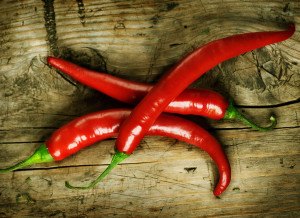
While all chili peppers, including cayenne pepper, contain capsaicin — the hotter the pepper (or the higher it is in stovells), the more capsaicin it contains, which is a potent inhibitor of substance P, a neuropeptide associated with the inflammatory processes, which causes pain.
Fibromyalgia patients are said to have an excess of substance P. Eating chilli — as long as you are not sensitive to spicy food — can be another way to help ease some of the pain for the pain-reducing endorphins they give you. Obviously, if you are sensitive to chilli, avoid eating it. If you dislike it, consider a high-quality supplement.
An alternative means to still benefit from this potent plant’s pain-relieving properties is in using capsaicin cream. A skin cream with 0.25%-0.75% capsaicin may help soothe some pain.
-
Capsaicin Cream can be especially beneficial for neuropathic pain, neuralgia, diabetic neuropathy, osteoarthritis, and many other chronically painful conditions.
-
Always test a tiny area before lathering it on: In a small group of CRPS/RSD patients for example, it actually had the opposite effect, causing a temporary worsening of pain. I have systemic CRPS and it really does help though as with everything, start small.
-
Also wear gloves: Although they state to wash your hands and apply it directly to painful areas, personally, I always wear washing up gloves to apply it; reusable plastic gloves or bio-plastic ones would work well too. Click here for important safety information: Indications, Side Effects, Warnings.
When Food Causes Pain [& Foods to Avoid]
If you have an existing food allergy before the chronic pain, you’ll no doubt already be aware of the heightened intensity of pain when you have an allergic reaction — however mild — to that food. If you have a systemic pain condition or centralised pain, this can be hugely magnified by certain foods.
Perhaps you’ve not considered food to be a source of increased pain or are unsure how to ascertain what may be making the pain worse. When confronted with so many potentially positive, and negative choices, many physicians, dieticians and nutritionists suggest using an elimination diet to test for sensitivities and allergies.
-
To simplify, you avoid foods thought to worsen chronic pain for a month by stripping your diet down to its barest bones, and the simplest food groups, and then follow with a consecutive reintroduction of each particular food every couple of days.
-
Some fibromyalgia patients for example find that the ‘nightshade’ food family contributes to increased pain levels, these include: tomatoes, aubergine (eggplant), peppers (capsicum) and potatoes.
-
Similarly, if you think you may have a wheat or lactose intolerance, follow an elimination diet and/or see a professional nutrition consultant or dietician. For a therapist try the Institute of Optimum Nutrition or Nutritionist-Resource.
-
Keep a Food Diary — The benefits of adding or avoiding specific foods are different for everyone, so keeping a food diary may help you to identify your personal triggers for pain and also which foods make you feel better. It can be a trial-and-error process but finding what helps you personally and improving your diet is always tantamount to feeling better.
Summary of Tips to Optimise Nutrition & Reduce Pain
-
Omega-3s are imperative for chronic pain — The “good fat” found in cold-water fish and walnuts has potent anti-inflammatory properties, while the oil lubricates your joints, maintains heart health and can even reduce brain fog by directly nourishing the brain cells, which love these healthy fats.
-
Enjoy a little protein with every meal — to keep your blood sugar from fluctuating, thus increasing fatigue and exacerbating depression and brain fog. Some experts say that the tissue abnormalities that can come with fibromyalgia may worsen or be caused by inadequate protein. Additionally, ensuring you eat enough protein can also help relieve some stiffness and pain.
-
B Vitamins for nerve pain — These have a positive impact on neuropathic or nerve pain as your nervous system relies heavily on the on the B group of vitamins, also vitamin E and omega oils. Foods that are rich in B vitamins include: Wholegrains, yeast extract (like Marmite or Vegemite for those in the Southern hemisphere), fruit and vegetables, also fortified and wholemeal breakfast cereals, nuts, seeds, chicken and dairy produce.
-
Stay hydrated — When you’re dehydrated, your pain will increase. Aim to drink a minimum of six generously sized glasses or more of water a day. Dehydration causes us to eat more when what we really crave is water. It also massively increases fatigue and brain fog. Drinking water every day will also help cognition, reducing brain fog and fatigue.
-
Eat food in its most natural state & avoid processed food as much as possible—especially if it contains aspartame or other additives, high salt, saturated fat and sugar, which exacerbate pain and symptoms.
-
Try to eat little and often & have healthy snacks on hand—especially beside your bed and in your Flare-Up Toolkit (sign-up for your free guide at the top of the page).
-
The benefits of eating healthily are all the greater for the chronically ill, particularly if pain and illness have altered your eating habits drastically. Never be ashamed to ask for help and remember to always be kind to yourself. No matter what you manage to consume or prepare, your attitude remains the most powerful pain management tool you have.
Feel free to share your thoughts in the comments below or in the Guest Book if you like what you see. ♥
You can also sign-up to the Princess Post & receive a free Flare-Up Toolkit here:

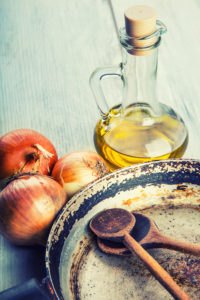




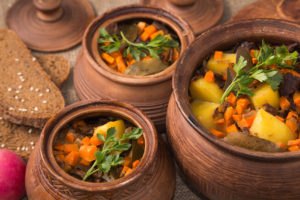



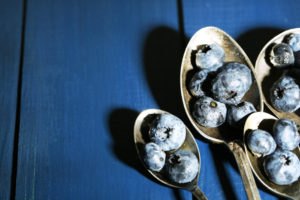

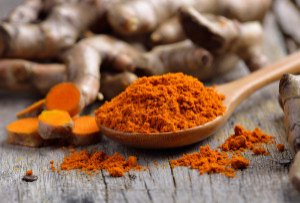

This is a great for its practical tips. Princess in the Tower remains my favourite pain blog.
One note: many people with fibromyalgia also have irritable bowel syndrome and/or sensitive bladder, so be careful Tring spicy foods like chilli or anything with heat/acids/potential irritants. Especially if you suffer from interstitial cystitis. Spicy things can cause a terrible flare in that case.
So pleased you enjoyed it, Lara and elated you love the Princess in the Tower! ? Thank you re IC. I did mention to avoid with sensitivities (GERD/IBS etc.) and use the cream instead though will edit to make this clearer and add more info. Thanks for the catch! ?
great info….and ALL you do here is v much appreciated – you are a true blessing.
Thank you, Eileen, so touched by your kind words and comment. Gentle hug ❥